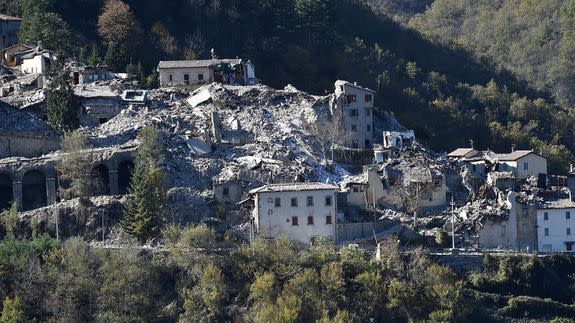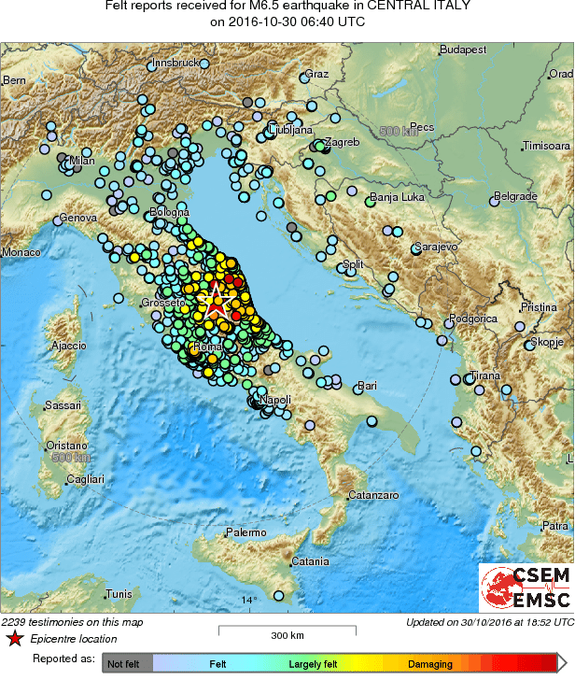Drone footage shows devastating aftermath of Italy earthquake

Drone footage released by Italy's fire and rescue corps shows the devastating aftermath of the magnitude 6.6 earthquake that hit central and southern Italy on Sunday morning.
The video, taken over the town of Amatrice, revealed demolished buildings, crumbling façades and streets clogged with debris. The town of about 1,000 people was also battered by Italy's Aug. 24 earthquake and a series of aftershocks last week.
Sunday's earthquake is potentially Italy's largest earthquake since a magnitude 6.9 quake struck southern Italy in 1980, according to the U.S. Geological Survey (USGS).
SEE ALSO: Here's why Italy is prone to devastating earthquakes
"These earthquakes are bringing all of central Italy to its knees," Giuseppe Pezzanesi, mayor of the town of Tolentino, told the Associated Press.
The Oct. 30 temblor struck at 7:40 a.m. local time and was centered in Norcia, about 35 miles from Amatrice.
There were no immediate reports of deaths, although last week's aftershocks left thousands of Italians homeless. The magnitude 6.2 earthquake in August also struck near Norcia and killed nearly 300 people.
In Amatrice, the nearly 600-year-old St. Augustine church crumbled on Sunday after surviving previous earthquakes, according to Italy's Vigili del Fuoco (literally "Firewatchers" in Italian).
The church's rooftop sustained damage last week, but the building was still standing as of Oct. 28.
#Terremoto #Amatrice chiesa S. Agostino: senza sosta opera salvaguardia patrimonio storico e culturale #vigilidelfuoco #saf pic.twitter.com/81nz0JaG1u
— Vigili del Fuoco (@emergenzavvf) October 28, 2016
Italy is particularly prone to earthquakes for a mix of geographical reasons, seismologists previously told Mashable.
Italy and its neighboring countries sit at the spot where the Eurasia and Africa tectonic plates collide. Italy also sits west of a sedimentary basin in the Mediterranean Sea that is expanding. Meanwhile, the Adria microplate to Italy's east is slipping beneath Eurasia and the Apennines Mountains.

Image: European-Mediterranean Seismological Center
On top of that, many towns in central Italy are built along steep slopes and are vulnerable to landslides that send buildings tumbling into valleys.
USGS said on Sunday the latest earthquake was part of a "complex sequence" of related temblors occurring on more than one fault segment in central Italy.
"We cannot rule out the possibility of similar sized or larger events," the U.S. agency warned, noting that "the probability of a larger event is low."
The Associated Press contributed reporting.
